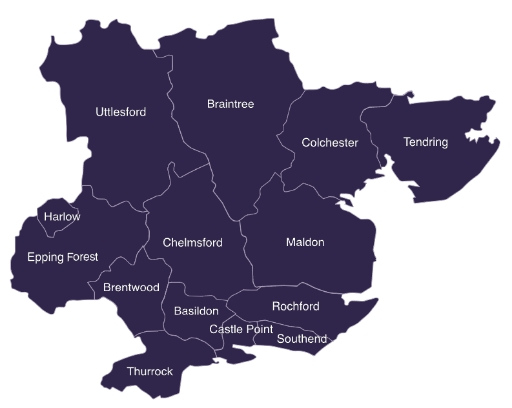Data and Insight
Share, Learn and Evaluate
It is important for the Essex Local Delivery Pilot (ELDP) to use data and insight to inform decision making and ensure investments are kept on track. Data has been collected to gather interesting findings around capability, opportunity and motivation, which was further explored through qualitative research.
The ELDP physical activity dashboard was developed by the Essex Centre for Data and Analytics (ECDA) using a wide range of data provided by Sport England. The dashboard has allowed ELDP to profile Essex communities to identify and recognise possible key drivers and barriers to inactivity. The information has provided a springboard for further research and allowed them to deploy targeted resources to communities most in need.
The ECDA allows you to break data down into the ELDP priorities and barriers to physical activity. The tool further allows you to filter down into specific areas within Essex districts, allowing a deeper dive into local communities.
State of Life
Following the announcement of the Covid-19 lockdown on 23rd
March 2020, the University of Essex and Jump, working with the Essex Local Delivery Pilot, launched the State of Life Survey. The survey allowed senior leaders in Essex County Council to understand the impact of physical activity and wellbeing on residents. It ultimately helped hardwire physical activity into the system and share insights into the changing behaviour trends.
The State of Life Survey is web-based and distributed by social media channels. It was designed to gather key insight into wellbeing across Greater Essex and inform the ELDP on decision making around Covid-19 recovery planning. As an online social media survey, the State of Life does not purport to be strictly representative of the whole Greater Essex population. Nevertheless, by tracking changes in key metrics, the team were able to gather insight into the experiences, views and behaviours of the Greater Essex population during lockdown.
The State of Life survey has helped Active Essex to understand how physical activity and wellbeing has changed since March 2020 and how this compares to pre-COVID baselines. Furthermore, analysis was completed finding that the factor that most correlated with physical activity, was general health, followed by variables related to living conditions and environment. This led to recommendations that the ELDP should prioritise working within areas of high deprivation.
Evaluation
A key priority for the Essex Local Delivery Pilot is to ensure that the time is taken to evaluate progress. Process Evaluation Reports are produced twice a year in accordance with Sport England requirements, by The University of Essex, an evaluation partner for the LDP. These reports use a range of qualitative and quantitative methods including outcome measurement, surveys, interviews, case studies, and documentary analysis to demonstrate the learnings that are occurring within the LDP. Each report includes a summary of key learnings and associated recommendations.
In September 2020, the report highlighted some key findings:
‘Identifying and building key relationships is crucial to success. Working collaboratively with new and existing partners extends knowledge, resources and reach, but it can be challenging to identify key individuals and organisations… The LDP team should produce a map of the system with key individuals and organisations, which will allow all individuals to identify relevant contacts across system settings. This can be used as a tool to plan and coordinate action in order to strengthen relationships in other system settings, and further enable hard-wiring of physical activity within and across the system.’
The LDP team recognised that by sharing the findings from these reports in this format was not very effective and therefore a ‘share, learn and action’ plan was developed. It is important that the learnings are continually shared and actioned by relevant team members and system partners, and the learnings and recommendations from the Process Evaluation Reports feed into this.



